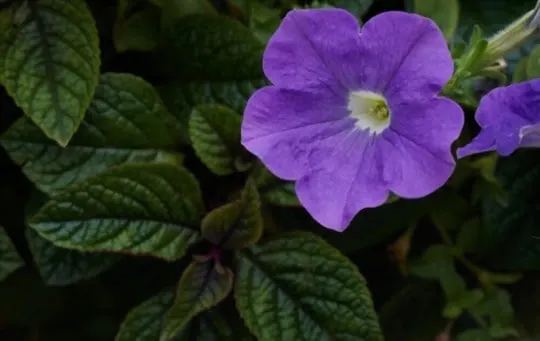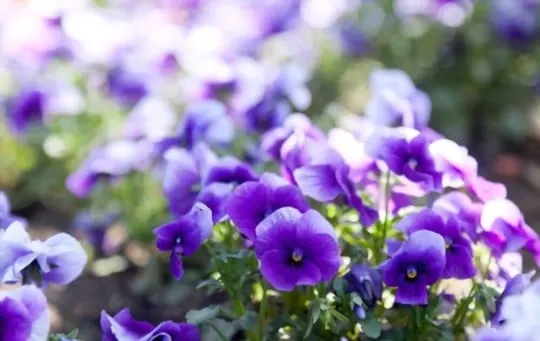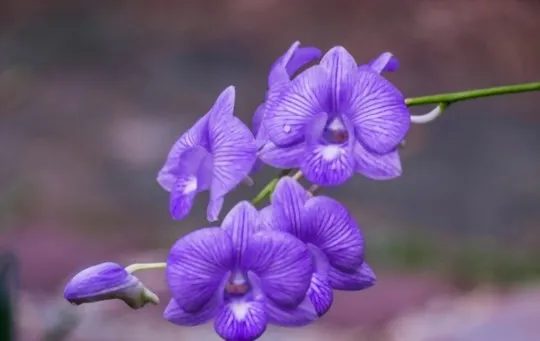There are plenty of edible flowers, and violet is one of them.
The flower’s name is the same as the color, and it grows abundantly in several parts of the world.
It’s used in several recipes and is known for its sweet taste.
This bright edible flower has been long used for various cooking purposes such as desserts, ice cream, tea, violet syrup, and salad dressing.
Moreover, its vivid tone instantly brightens the plate, making it excellent for garnishes.
Are you curious to know what violet tastes like? Read on to learn more about this edible bloom.
What Is Violet?

Violet is one of the most common edible flowers and is highly floral.
Like daisies, dandelion, and honeysuckle, violet, too, is widely used as a garnish for desserts and salads.
This bright bloom is used in various cooking purposes for its eccentric flavor and tastes exceptional when added to pastries, beverages, and confectioneries.
There is a wide variety of violet species available that are widely grown and harvested.
This flowering plant boasts a rich purple hue that is easily recognizable, but some varieties also feature colors like sunset yellow and shades of blue and purple.
Both the bloom and leaves of this plant are edible and taste best when eaten raw.
Of course, many flowers are safe to eat, but you need to be wary and differentiate between palatable and unpalatable blooms.
Also, avoid taking the roots of this flowering plant, as some varieties can make you feel sick when consumed.
What Does Violet Taste Like?

Violet has an intense flavor with a distinctive perfume-like smell.
Its taste is often characterized as sweet and floral.
Some varieties of violet produce a strong scent, and they’re often used in fruit salads and beverages.
The leaves of this blooming flower taste similar to peas and lettuce and blend exceptionally well with steamed veggies or grilled meat.
Violet is famous for all good reasons and is an exceptional culinary delight that adds beauty to any meal.
Moreover, frosted and crystallized violets are widely used to decorate food items like cakes and puddings.
Though most people compare the taste of violet and lavender, they don’t taste anywhere the same.
Lavender gives off an earthy smell like sage and thyme and has a sweet, spicy flavor profile.
Meanwhile, violet produces a soft powdery aroma with a woody floral tone and a sweet, mild taste.
Other than adding vibrant color to your dish, its leaves, when boiled, offer several health benefits.
It contains alkaloids and flavonoids that help reduce blood pressure and contains a soluble fiber that aids in digestion.
On the other hand, flower petals have a relaxing effect that soothes inflammation and irritated throat and helps relieve colds and flu.
Besides being nutritious and adding beauty, you can make this bloom into various treats, like violet syrup, herbal tea, and candies.
Also, cooking and experimenting with flowers is fun.
So, let’s discuss how to prepare and season this bloom into your dishes.
How to Cook and Serve Violet?

This vibrant purple flower is a bonus if you enjoy adding edible flowers to your meal.
Since its leaves and petals are edible, you can use violet in your cooking using several ideas.
To use fresh violet as a dressing, place them when you’re about to serve, as the ambient room temperature or heat can cause the flower to wither.
Some ways to prepare violet:
Violet Syrup – Violet syrup is super easy to make.
It uses simple ingredients and is a must-try.
Here’s how:
- To start preparing, you’ll need a cup of fresh violets, 1 or 2 cups of sugar per your liking, and a cup of water.
- Now, add all the ingredients to a pot and let it boil for about 10 minutes without covering the lid.
- Let it boil until it thickens into syrup. When done, the consistency should look like honey.
- Once done, strain the petals, add the syrup to a glass jar, and store it in the fridge.
Violet lemonade – If you’re searching for a refreshing springtime delight, go for violet lemonade.
Add a few drops of lemon to your syrup and watch the drink change from blue to purple.
Conclusion
Try experimenting with several ideas with your creativity while using violet for cooking purposes.
It can’t go wrong.
You can make soothing violet tea, eat them raw, decorate salads and desserts, use it in soups, and more.
But ensure that the flowers you use are freshly picked or purchased from organic farms to be sure that there aren’t harmful chemicals.
Moreover, using edible flowers in dishes is a hot food trend.
It enhances the flavor and also makes the dish look pretty.
So, if you have violets in your garden, try something new today.

What Does Violet Taste Like? Does it Taste Good?
Ingredients
- Violet
- Ingredients from your favorite recipes
Instructions
- Depending on the ingredients used, the cooking method, and the type of dish, the taste of the food can vary greatly.
- Make sure to select a recipe that will elevate the food’s original flavor, and enjoy experimenting with different recipes!

Andrew Gray is a seasoned food writer and blogger with a wealth of experience in the restaurant and catering industries. With a passion for all things delicious, Andrew has honed his culinary expertise through his work as a personal chef and caterer.
His love for food led him to venture into food writing, where he has contributed to various online publications, sharing his knowledge and insights on the culinary world. As the proud owner of AmericasRestaurant.com, Andrew covers a wide range of topics, including recipes, restaurant reviews, product recommendations, and culinary tips.
Through his website, he aims to inspire and educate fellow food enthusiasts, offering a comprehensive resource for all things food-related.

Leave a comment